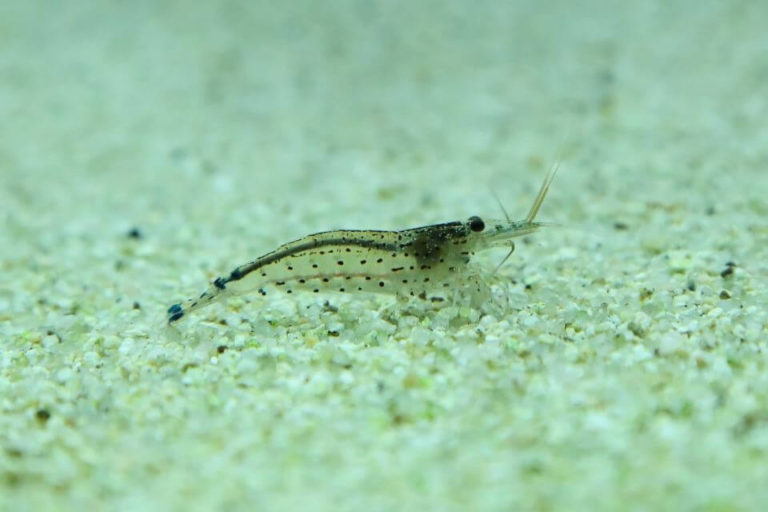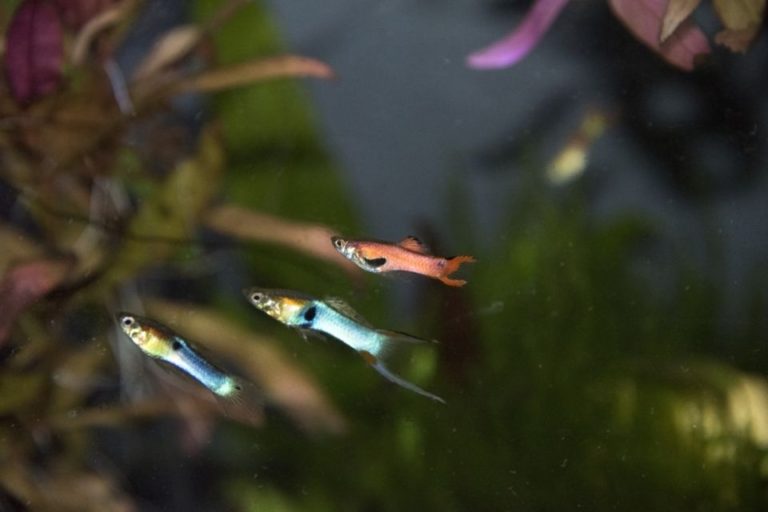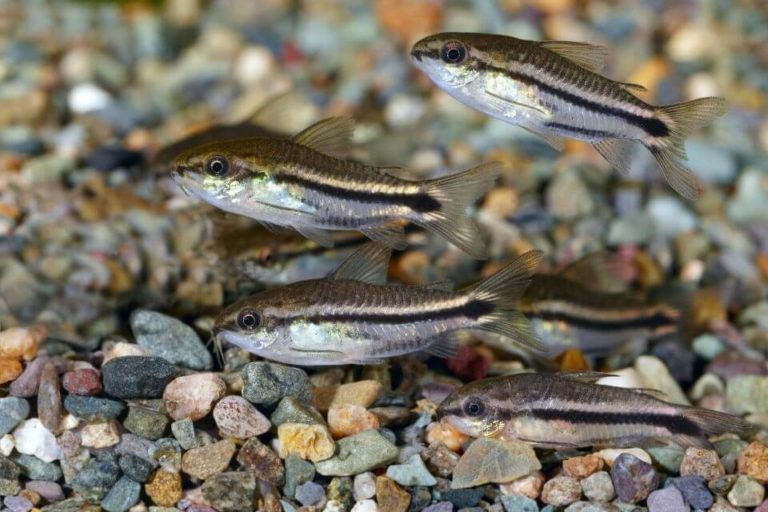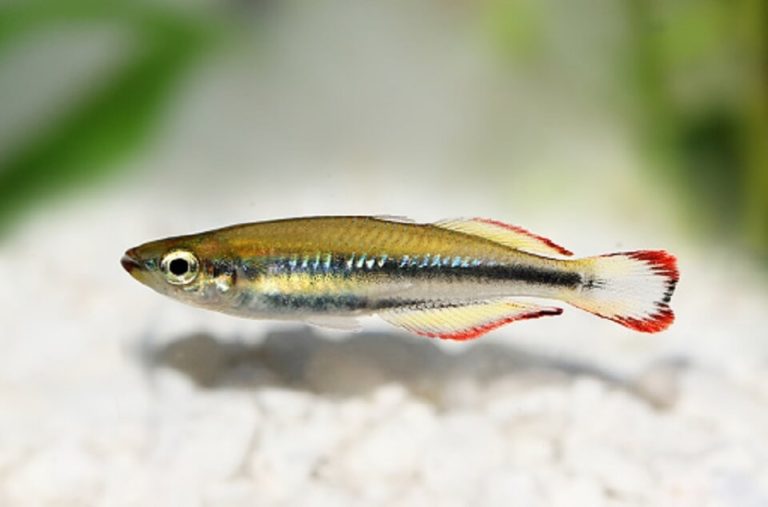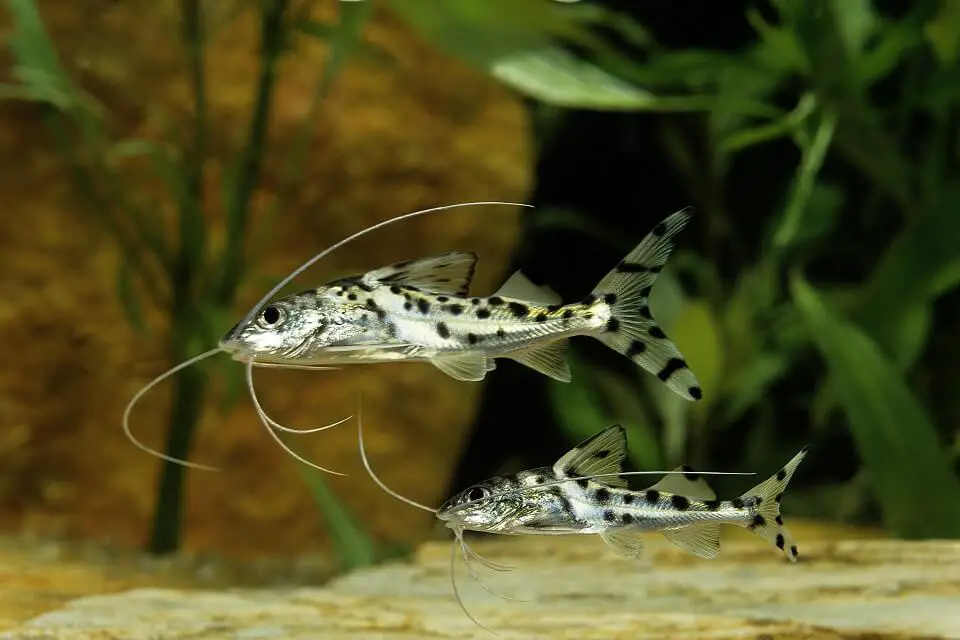Congo Tetra Care: Size, Lifespan, Food, Breeding and Tank Mates
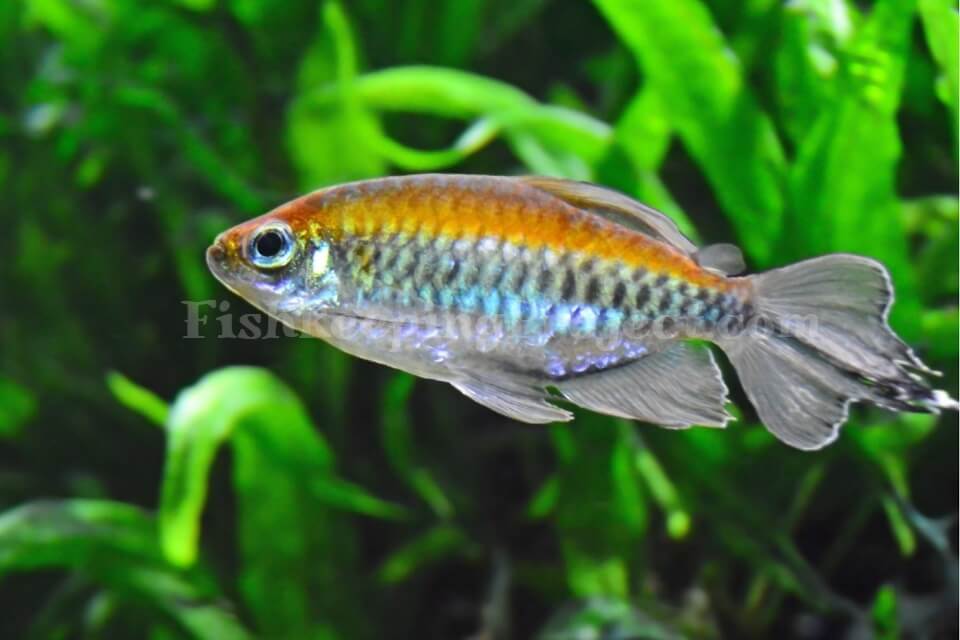
Congo Tetra is the most elegant Tetra fish species that will brighten up any planted aquarium tank. It is a well-known factor that the Congo Tetra is the true definition of a pretty and alluring fish.
This ornamental fish serves not only elegance but also good behavior and a good lifespan. This, plus the low care level that these fish species require, makes it the finest African native fish.
This is a complete guide showing the Congo Tetra care profile and any other detail you may want to know about this fish. Read till the end to understand this fish species in every respect.
| Quick Facts: | |
|---|---|
| Common Names | : Congo Tetras |
| Scientific Name | : Phenacogrammus Interruptus |
| Family | : Alestiidae |
| Origin | : Congo river in Zaire of Central Africa |
| Care Level | : Easy |
| Lifespan | : 3 - 5 years |
| Size (average) | : 3 - 3.5 inches long |
| Diet | : Omnivores |
| Breeding | : Egglayer |
| Social | : Schooling fish |
| Temperament | : Peaceful |
| Minimum Tank Size | : 20 gallons (30 gallons recommended) |
| Temperature | : 73 - 82 °F (23 - 28 °C) |
| Water Hardness | : 3 - 18 dGH |
| Water pH Level | : 6.0 - 7.5 |
Overview of Congo Tetra
The Congo Tetra is a fluorescent-colored fish and a common addition in home aquariums. It boasts a mix of colors that make it highly appealing and fascinating to watch. Its theme colors are silver and orange.
The long sport finnage is also a striking characteristic of them. This fish appears in a common length of 3 to 3.5 inches, with the females being generally smaller than the males.
The females lay eggs and for breeding purposes, you must ensure that they are protected by eliminating other adults in the space who may eat the eggs.
Since the eggs are prone to fungus infection, you should also ensure that the breeding space is treated correctly.
As the name suggests, this fish is from the slower-moving tributaries of the Congo Basin and the upper reaches of the river Congo but is now a popular aquarium species worldwide.
Congo Tetras prefer moderately planted and calm aquariums. Since these fish tend to swim in schools of 5 to 8, they require a relatively large aquarium.
In an aquarium, let the Congo Tetra pack be the dominant species, otherwise, it will remain shut away.
They are omnivores and can survive on many small foods, including micro-pellets, brine shrimp, freeze-dried bloodworms, and high-quality fish flakes. In general, these fish species require low to moderate care.
Congo Tetra Typical Behavior
If you like peaceful and calm fish, the Congo Tetra has exactly the same behavior. These fish also tend to swim in schools where they, in most cases, establish a pecking order within the school.
The scene they create when they peacefully swim in these groups is something every fish lover will find enthralling.
The Congo Tetra shows a timid temperament and can be easily spooked or frightened and hence need to be kept in a school of around six or more Tetras.
Their peaceful schooling nature and timid temperament mean that you need to keep them off other aggressive and jumpy fish species.
It has been observed that these fish tend to isolate and spend most of their time hiding when their tank mates are highly aggressive.
Congo Tetra Size
First, it is worth noting that the females are smaller than the males under normal circumstances but appear plumper when they are ready for breeding. An average Congo Tetra will be between 3 to 3.5 inches.
Although this size is small compared to other types of fish, they are bigger than other Tetras. Note that this is the average size of the domesticated/ tank varieties, which, like any other aquarium fish, tend to remain on the smaller side.
For the wild Congo Tetra, expect the average fish to be close to 4.5 inches.
Congo Tetra Lifespan
In an aquarium setting the average Congo Tetra Lifespan is around 3 to 5 years. You will be able to extend Congo Tetra Lifespan a little more than 5 years if you committed to giving them optimal care.
Appearance
This full-bodied fish has large scales with a spectacular mix of colors and markings. These fish have black red outlined eyes that add to the glamor that the rest of their body serves.
They also have this metallic look that gives them a perfect roundup to the colored scales. There is a noticeable stripe on these fish’s bodies that runs from the head to the tail.
When the fish swims in water, this midsection’s feature is beautifully surrounded by the color-changing luminescence, a reason why it is quite striking to the eye.
The tail fin is the most striking characteristic of the Congo Tetra. These fish have a long sporty tail fin that is a beautiful combination of grayish-violet feathers and clear white edges.
The dorsal fin takes the colorations of the body but more lightly and transparently.

The Congo Tetras are not sought after for no reason. They boast a unique appearance thanks to their color mixtures and markings, making them stand out among other tank fish.
Generally speaking, these fish have a long flat body with a slightly tall midsection. As mentioned above, the most striking appearance feature of a Congo Tetra is the long semitransparent fins.
Here, the male Congo Tetra is endowed with outstanding longer dorsal fins than the female. This makes the male varieties look beautiful in water, a characteristic that helps attract their female counterparts for mating.
The colors and markings present on the entire Congo tetras’ body give them a lustrous rainbow look, especially when there is correct lighting.
This is undoubtedly the most common reason why many animal lovers go for the Congo Tetras as aquarium additions. So what are these colors and markings that help the fish create eye-catching sceneries? Let’s find out below.
Colors and Special Markings
The Congo Tetra is a fish of many distinct and fluorescent colors. The colors run from the front to the back and extend to the caudal fins (specifically for the males).
In general, the Congo Tetras have bluish-green coloration. This striking color is a combination of blue on the top, red to yellow-gold through the middle, and blue to the back and slightly above the belly.
The head area is generally golden-yellow in color and as stated above, the golden color extends from the head to the caudal peduncle as a stripe. Note that it is more striking in the males compared to the females.
The fins (dorsal, pelvic, and anal) have a generally grey appendage with clear or white edges. Under correct lighting, this fish’s body scales shine like a diamond and create very pleasing scenery when they swim in the water.
In most pet stores, you will buy the Congo Tetra juveniles that lack coloration and markings. If proper care and the environment is given to the juveniles, they grow, developing all these colored features.
Congo Tetra Habitat, Tank Conditions, and Care
While the Congo Tetra is one of the easiest fish to care for, this can only be possible if you give them the right habitat (feeding, swimming, hiding, and breeding environment).
With the right habitat and water conditions, it does not take much to keep these fish happy. These hardy fish mainly prefer water that is calm, dark, soft, and one that is in a peaceful environment.
Darker substrates and bottom-growing plants are also Congo Tetra’s favorite. These conditions can only be controlled with the help of an aquarium.
As mentioned in the behavior section above, the Congo Tetra is peaceful and calm and hence their habitat should be free of bullying and aggressive fish.
Also, since their magnificent fins (for the males) are delicate, fin-nipping fish should not be in their habitat. In addition to these, you need to consider the following factors when establishing their habitat and care program.
– Congo Tetra Tank Size
Congo Tetras are schooling fish that shoals in groups and hence need plenty of space to roam. To keep a healthy and happy school of 6 to 8 fish, you need a 20 or 30 gallons fish tank.
– Congo Tetra Tank Setup
A larger tank also gives you the freedom to include a nice substrate of dark gravel, sand, and silt. Minimize the rocks and focus more on the plants.
For Congo, Tetra tanks avoid branches and wood as they will significantly minimize the space and interfere with the beautiful scenery they create. What’s more, a large tank will give the Congo Tetras room to display their beautiful colorations.
As mentioned above, these fish prefer a darker environment and hence the tank should offer exactly this. Just make sure that the aquarium you set up is dim and not in an open space that receives a lot of light.
If you can get subdued lighting, the better the tank will bring out the Congo Tetras’ coloration.
– Suitable Plants
Congo Tetras need numerous places to hide when they are afraid. Plants offer perfect hiding places for these fish, a reason why this is the number one aquarium addition that you should invest in before bringing them in.
Here, both live and plastic plants work for the Congo Tetra. It is, however, advisable to plant your tank with the typical aquarium live plants as they help reduce the nitrate level in the environment.
To ensure that the plants do not take up most of the tank’s space, place them on the sides and back.
Here are our recommended live aquarium plants to have in the tank:
TIP: Using live plants in your aquarium is optional, and you can use artificial plastic plants. But unlike plastic plants, live plants maintain the water freshness by adding oxygen, utilizing nitrates, and removing carbon dioxide from the water. Hence the live aquarium plants are recommended.
– Water Temperature and Conditions
Congo Tetras are comfortable in soft acidic water. You can leverage a CO2 system, a water conditioning agent, or a natural product such as peat or alder cones to lower the water’s pH to around 6.0 to 7.5.
The water should have a hardness of 3 to 18 dGH.
Like any other ornamental fish, the optimum temperature to keep Congo Tetras is 73 – 82 degrees Fahrenheit (23 – 28 degrees Celsius). Always provide a heater when the room temperature is too low.
The water also needs to be adequately filtered and safe for the Congo tetra fish to live in. Note that if the water quality drops, the fish may lose their color or end up with damaged fins.
Congo Tetra Diet and Feeding
Congo Tetras are omnivores and as mentioned above, they can feed on a wide variety of small-sized foods. The wild varieties mainly feed on plant matter, algae, worms, and insects.
Domesticated ones will work with brine shrimp, fresh flake foods, and blood worms. The rule of thumb here is to ensure that the food is bite-sized to ease the ingestion process and of high quality to keep the fish highly revitalized.
To make sure that they eat all the food you give them, just feed them only what they can consume in less than 3 minutes. Also, feed them several times a day to increase the chances of the fish eating the foods.
Since sometimes these fish can get shy about taking the food when being watched, don’t worry if you see the Congo Tetras avoid the food right after you feed them.
Common Diseases
Congo Tetras are not exempt from common fish diseases despite being hardy, resilient, and not having species-specific health problems.
The most prevalent disease with the Congo Tetra is the Itch, which develops when the fish is stressed, a common condition when you keep the fish in colder temperatures.
Although this illness can be easily reversed with isolation and some OTC drugs, it can be fatal if left unattended. Other common diseases that affect the Congo Tetra are skin flukes, bacterial infections, parasitic infections, and Ichthyobodo infections.
To keep your Congo Tetra free from diseases, you need to keep the overall tank conditions at the required level and feed them with high-quality food at all times.
Gender Differences of Congo Tetra.
- The most striking difference is that the male Congo Tetra is more colorful and marked than the females.
- The males are generally bigger than the females at any stage of development.
- Mature females are more rounded than mature males.
- The fin structure of the males is more elaborate and pronounced than that of the females.
Breeding the Congo Tetra
Breeding is the only thing that can get a little complicated for the Congo Tetra. Although most people acquire the commercially bred Congo Tetras instead of doing the breeding themselves, it is actually possible in a home aquarium as long as you do it properly.
To breed Congo Tetra, you need a large aquarium that is well-lit and with peat-filtered water. These conditions will encourage the fish to spawn.
The conditions should be kept as explained above. Next, you should provide the females with a nice place to lay the eggs. For this, you need to add aquarium plants such as Java Moss to the tank.
A layer of meshwork should also be added to the aquarium to keep the adults out but allow the eggs’ passage to the plant’s network.
To allow filtration and water flow, you also need to add a small air-powered filter to the breeding tank.
Spawning Process
For the spawning process to be successful, you need to do the following:
Put the males and females in separate tanks and feed them properly for 2 weeks. Pick breeding pairs or groups (2 males for 1 female) and transfer them to the breeding tank in the evening.
To ensure that you have appealing juveniles, choose the most colorful males.
Under the lighting and water conditions mentioned above, the males will force the females to sink to the bottom, where they will spawn side by side. Although spawning is meant to kick off immediately, some Congo Tetra takes up to 6 days to spawn.
The belly of the female will be rounded when she is full of eggs. The female should shortly scatter the eggs that will sink to the bottom. At this stage, it is advisable to remove the adults from the tank as they can eat the eggs.
After removing the parents, you can dim the light since the eggs are sensitive to bright light. You should carefully examine the eggs and eliminate those with fungal growth to prevent spreading the infection to the healthier ones.
The transparent eggs will take a week to hatch into large fry that will swim almost immediately. The newly hatched fry can be fed on finely crushed flake food, freshly hatched brine shrimp, and rotifers.
Best Congo Tetra Tank Mates
To keep your Congo Tetras more active and stress-free, it is advisable to keep them with other Tetras. If you really need a mix of fish in your aquarium, then you should go for peaceful tank mates such as:
- Corydoras Catfish
- Cherry Barbs
- Silver Tip Tetra
- Chili Rasbora
- Galaxy Rasbora
- Emerald Dwarf Rasbora
- Ember Tetra
- Honey Gourami
- Opaline Gourami
- Dwarf Gourami
- Madagascar Rainbowfish
Origin, Distribution, and Availability
The Congo Tetra is native to the river Congo in Zaire of Central Africa. These African native fish inhabit most of the slightly acidic waters surrounding the river Congo and the middle Congo basin.
They are mostly found in surrounding tributaries, streams, pools, and marshes. The perfect gathering places for this fish is in these natural habitats are those with tall vegetation and a few trees.
These fish also like to congregate in areas where the substrate is made up of mud, sand, and silt. The first importation of the Congo Tetra as aquarium fish was done in the 1960s.
In the US, the Congo Tetras were first introduced to the Southeastern region in the 1970s, where specifically Florida fish farms developed a breeding line where most of the species now found in pet stores descended from.
These fish are also highly bred for commercial purposes in Eastern Europe. Despite all the rigorous breeding that the Congo Tetras have gone through in various areas, they still retain their native species characteristics.
In the wild environments, it is mainly fed by algae, insects, worms, crustaceans, and plant matter. You will, in most cases, find these fish swimming in large schools, especially when searching for food.
FAQs
Are Congo Tetras Aggressive?
No, as long as you keep them with other Congo Tetra of the same size. Congo Tetra is a very peaceful fish and barely will you see them aggressive.
Some conditions, such as overcrowded aquariums, can, however, push them to be a little confrontational.
Are Congo Tetras Fin Nippers?
When stressed, the Tetras can let go of their calmness and nip the fins of their tank mates. However, this can only happen if they have overgrown teeth, a very rare case.
Any calmer fish in the tanks will obviously fall victim to the fin nipping or biting by the Congo Tetra. It is worth noting that insufficient swimming space can make the Congo Tetra nip the fins of other fish in the tank.
Do Congo Tetras Have Teeth?
Yes, Congo Tetras do develop teeth but very tiny ones. Note that the teeth’ size will depend on the breeding line where the fish you have, came from.
With teeth or not, Congo Tetra still remains one of the calmest and most peaceful ornamental fish.
How Many Congo Tetras Should be Kept Together?
Congo Tetras are schooling fish and should always be kept in groups with other Tetras in a given space. Since Congo Tetras prefer swimming in schools of 6 to 8 individuals.
It is good to maintain this number in a minimum of a 20-gallon tank (30 gallons is recommended). If your aquarium is more extensive than this, you can add other Congo Tetras based on the 20 gallons 6 fish standpoint.
Conclusion
If you have a tank set up in your home, you are doing a disservice to it if it does not have even a single Congo Tetra. As seen from this guide, these fish are unique due to their striking appearance and promise a lot in terms of brightening up your aquarium.
Once you have the right aquarium environment and conditions, the Congo Tetras will be your best domestic water animals as they will require very little care.
Now that you have all the details you need to know about these fish, you have no excuse not to acquire the Congo Tetras. Just visit your local pet shop, acquire your Congo Tetras and your aquarium will never be dull again!
We hope this care guide helped you a lot to know about caring for Congo Tetras. If you have questions or concerns please contact us at any time.


